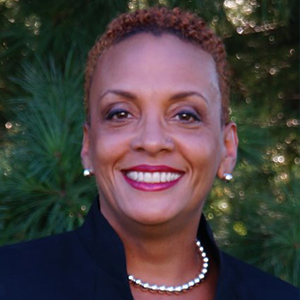 In this month’s staff blog, Pamela Ross, community investment officer, emphasizes the importance of organizations that engage “opportunity youth,” young adults, ages 16-24, who are out of school, not enlisted and not working. It is a moral imperative, says Ross, to invest in this demographic in order to create a more inclusive economy and build the dreams of all youth.
In this month’s staff blog, Pamela Ross, community investment officer, emphasizes the importance of organizations that engage “opportunity youth,” young adults, ages 16-24, who are out of school, not enlisted and not working. It is a moral imperative, says Ross, to invest in this demographic in order to create a more inclusive economy and build the dreams of all youth.
Who are “opportunity youth?” What exactly does that term mean?
Opportunity youth, also known as disengaged youth, are 16-24-year-olds who are out of school, not enlisted and not working, often as a result of systematic barriers to jobs and education. There are currently 5.5 million opportunity youth in America—that equates to one in seven young people in the U.S. In Indiana, there are over 250,000 opportunity youth, with 30,000 in Marion County alone. The numbers are staggering and the resources to reconnect these youth to education, skill development, jobs, social networks and a viable means to thrive are nowhere near equally matched to the need.
Their lifestyle is not always mainstream, but their desire to succeed is no different than their most highly resourced peer. They want to achieve and make contributions to society just like anyone else.
Disturbingly, these young people seem to have been forgotten by society. They are rarely discussed and often overlooked in conversations regarding untapped potential in populations that contribute to increased economic growth. Ignoring these youth costs society billions of dollars every year in lost productivity and social services, and negatively impacts everyone’s future. This group is vital to our community and their challenges are not for the faint at heart. Their stories are plagued with trauma, unique barriers and great disappointment. Their lifestyle is not always mainstream, but their desire to succeed is no different than their most highly resourced peer. They want to achieve and make contributions to society just like anyone else.
Why is this demographic not plugged in to school, work or other programs?
For various reasons, these individuals may leave high school without a diploma, or graduate high school and attend college but lack the preparation needed to obtain a decent job in a 21st century economy. They often drop out of college for the same reasons as those dropping out of high school. The ability to navigate through the educational system without meaningful supports is basically impossible and highly discouraging. The system often sends a message of “you don’t belong.” The various barriers create a pathway to failure without an easy pathway back to success.
How do organizations get connected to this age group, if they aren’t in school or other programs?
It is difficult to make the initial connection but even more difficult to keep the youth engaged. The connection can come through a variety of ways. Often through word of mouth and youth who are already connected to resources. Relationships and trust are key. Therefore, unconventional methods, such as activities like basketball, are implemented to at least create a space for conversations to be had regarding their desires, options and resources towards greater achievement.
What is the result of a good program that engages this age group?
Great programming includes building meaningful relationships based on trust, compassion, understanding, hard work and a pathway to success. Success is determined by the individual, but exposure to their full potential is essential. The staff of these organizations must be resourceful and take on great efforts to be relevant and connected to assets that are imperative to this population’s future. Ultimately, youth must be given choices beyond their current circumstance and offered the support to reach their full potential.
What does this group need? How can we give it to them?
In order to achieve long-term, systemic change we have to do several things. First, we need to speak truthfully about the issue. Statistics show racial inequity has played and continues to play a significant role in the lives of these young people. Over 50 percent of the opportunity youth are people of color. Therefore, it is not possible to identify solutions and opportunity without including this hard truth in the equation. Secondly, these youths have to be involved in the discussions about programs, policy and strategy that affect them. Instead of designing things FOR them, we should design WITH them. Third, calling young people “opportunity youth” without creating opportunities only makes them a statistic. Opportunities have to not only be created but connected back to these youth in a manner that meets them where they are.
…we see underserved populations as the weak people seeking a handout but given the opportunity, we will discover their greatest strength has been the ability to survive.
Too often, opportunities are said to be created but the ability for those intended to be served is difficult and lacks understanding of the intended recipient. Finally, these youth need not only be heard and recognized by those with the resources and influence to make a change, but those people must also be willing to listen and act on what they hear needs to be done. If we truly believe that our youth are our greatest source of untapped talent, then opportunities to participate, have a voice and lead must be given to ALL youth regardless of their place, race or identity.
What can we learn from engaging opportunity youth?
If we truly begin creating the capacity to serve opportunity youth, I believe the greatest lesson we will learn is one of resiliency. Too often we see underserved populations as the weak people seeking a handout but given the opportunity, we will discover their greatest strength has been the ability to survive. We have to seek compassion before solutions and value these young people for who they are as well as who they can be.
Who is doing this work the best?
In Marion County, there are just a few organizations in this service space. EmployIndy has taken a major lead in this work through funding, focused leadership and intentional partnering. Through the leadership of Rev. Rodney T Francis, Senior Director of Opportunity Youth Services, they are implementing programs, gathering data and creating the fundamental platform for Marion County to change the trajectory of this population.
Another great organization in this space is Groundwork Indy. Under the direction of Executive Director, Phyllis Boyd, youth are being given the opportunity to not only obtain skill development and an earned income but obtain life skills, identify their personal goals and most importantly, be welcomed versus punitively displaced again.
More attention has been given to this issue over the past seven years, nationally and locally. There is still much work to do.
What is the benefit (for the individual and the community) when we work with this age group?
We often discuss the unacceptable number of young people that drop out of high school every year. However, there is not enough discussion regarding those who have already left the education system and why. These young people absolutely still count and like any major pandemic, their trajectory effects the vitality of our nation. We cannot focus solely on prevention without helping recuperate those who have already been stricken. They have equal importance to our society. Time is of the essence and although challenged, America is still the place of dreams and opportunity. It is imperative that we turn this around for our young people.
These “opportunity youth” represent enormous untapped potential for our society and yet they start out life with big dreams that include graduating from college and/or obtaining a means of becoming self-sufficient in spite of challenging life circumstances. They accept responsibility for their decisions, but also yearn for support along what they hope will be a road to opportunity. Our society often treats them as problems to be addressed, but their voices show that they are potential to be fulfilled and can become key leaders in our society if given a chance. We all grow and prosper when the forgotten are included economic prosperity.
ABOUT PAMELA ROSS
Pamela serves as a liaison between not-for-profit organizations, the community, and the foundation’s board, advising on the grant-making process and community issues. She also provides guidance and technical assistance to organizations applying for grants and to individuals conducting grant-making.
Pamela relocated back to Indianapolis from Phoenix, Arizona where she was responsible for the oversight and success of programs serving thousands of foster children. Prior to leaving Indy, she held the position of senior director of programs for the Center for Leadership Development, a long standing youth development organization for the community. Pamela has her masters in social work from the University of Georgia with a concentration focused on community development and program evaluation. She has over 20 years of professional experience in the social services field, managing multiple programs dedicated to elevating the awareness and improving the plight of children and families. “I believe life’s greatest reward is found in the gift of giving, and nothing is more satisfying than to know your life has made a difference.”






Leave A Comment